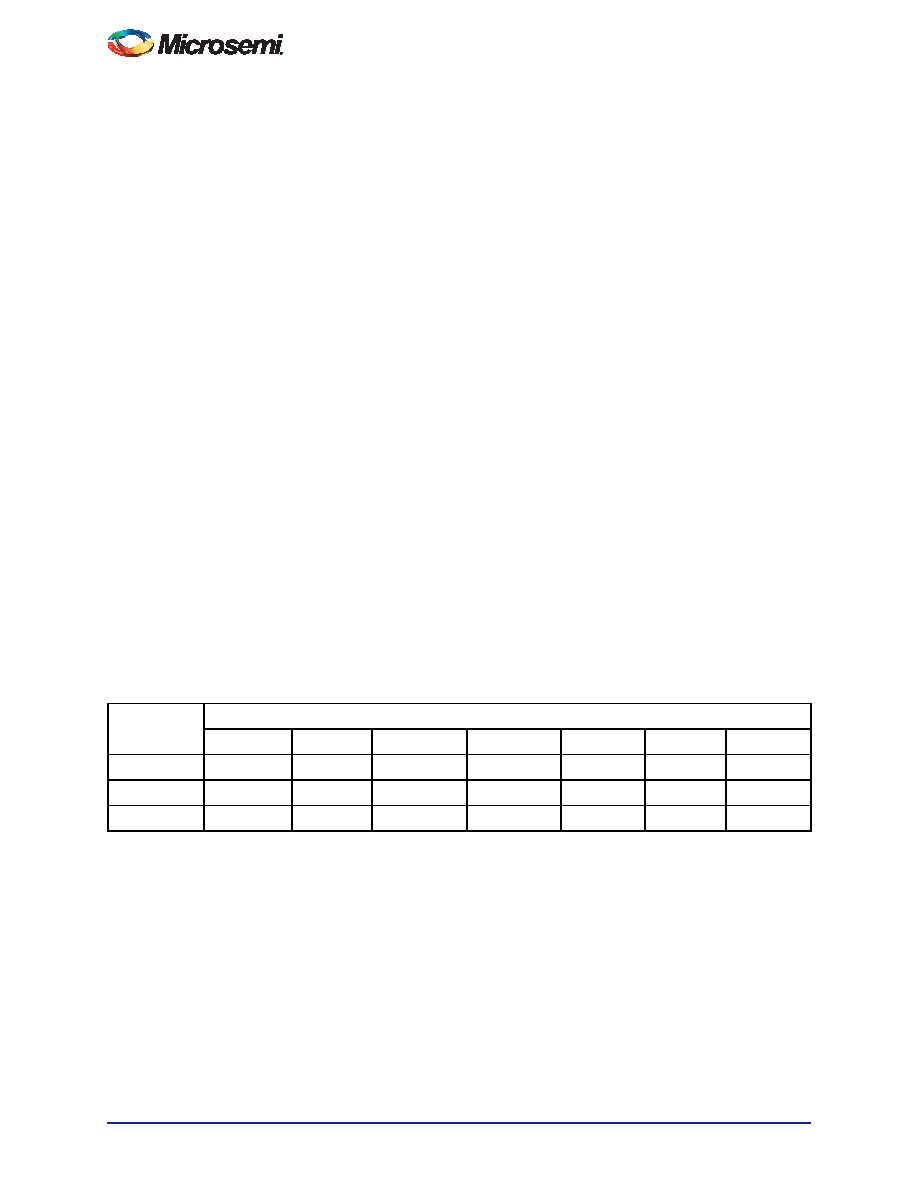- 您現(xiàn)在的位置:買賣IC網(wǎng) > PDF目錄4537 > EX64-FTQ100 (Microsemi SoC)IC FPGA ANTIFUSE 3K 100-TQFP PDF資料下載
參數(shù)資料
| 型號(hào): | EX64-FTQ100 |
| 廠商: | Microsemi SoC |
| 文件頁(yè)數(shù): | 24/48頁(yè) |
| 文件大小: | 0K |
| 描述: | IC FPGA ANTIFUSE 3K 100-TQFP |
| 標(biāo)準(zhǔn)包裝: | 90 |
| 系列: | EX |
| 邏輯元件/單元數(shù): | 128 |
| 輸入/輸出數(shù): | 56 |
| 門數(shù): | 3000 |
| 電源電壓: | 2.3 V ~ 2.7 V |
| 安裝類型: | 表面貼裝 |
| 工作溫度: | 0°C ~ 70°C |
| 封裝/外殼: | 100-LQFP |
| 供應(yīng)商設(shè)備封裝: | 100-TQFP(14x14) |
第1頁(yè)第2頁(yè)第3頁(yè)第4頁(yè)第5頁(yè)第6頁(yè)第7頁(yè)第8頁(yè)第9頁(yè)第10頁(yè)第11頁(yè)第12頁(yè)第13頁(yè)第14頁(yè)第15頁(yè)第16頁(yè)第17頁(yè)第18頁(yè)第19頁(yè)第20頁(yè)第21頁(yè)第22頁(yè)第23頁(yè)當(dāng)前第24頁(yè)第25頁(yè)第26頁(yè)第27頁(yè)第28頁(yè)第29頁(yè)第30頁(yè)第31頁(yè)第32頁(yè)第33頁(yè)第34頁(yè)第35頁(yè)第36頁(yè)第37頁(yè)第38頁(yè)第39頁(yè)第40頁(yè)第41頁(yè)第42頁(yè)第43頁(yè)第44頁(yè)第45頁(yè)第46頁(yè)第47頁(yè)第48頁(yè)

eX FPGA Architecture and Characteristics
1-26
Revision 10
Timing Characteristics
Timing characteristics for eX devices fall into three categories: family-dependent, device-dependent, and
design-dependent. The input and output buffer characteristics are common to all eX family members.
Internal routing delays are device-dependent. Design dependency means actual delays are not
determined until after placement and routing of the user’s design are complete. Delay values may then
be determined by using the Timer utility or performing simulation with post-layout delays.
Critical Nets and Typical Nets
Propagation delays are expressed only for typical nets, which are used for initial design performance
evaluation. Critical net delays can then be applied to the most timing critical paths. Critical nets are
determined by net property assignment prior to placement and routing. Up to six percent of the nets in a
design may be designated as critical.
Long Tracks
Some nets in the design use long tracks. Long tracks are special routing resources that span multiple
rows, columns, or modules. Long tracks employ three to five antifuse connections. This increases
capacitance and resistance, resulting in longer net delays for macros connected to long tracks. Typically,
no more than six percent of nets in a fully utilized device require long tracks. Long tracks contribute
approximately 4 ns to 8.4 ns delay. This additional delay is represented statistically in higher fanout
routing delays.
Timing Derating
eX devices are manufactured with a CMOS process. Therefore, device performance varies according to
temperature, voltage, and process changes. Minimum timing parameters reflect maximum operating
voltage, minimum operating temperature, and best-case processing. Maximum timing parameters reflect
minimum operating voltage, maximum operating temperature, and worst-case processing.
Temperature and Voltage Derating Factors
Table 1-16 Temperature and Voltage Derating Factors
(Normalized to Worst-Case Commercial, TJ = 70C, VCCA = 2.3V)
VCCA
Junction Temperature (TJ)
–55
–40
0
25
70
85
125
2.3
0.79
0.80
0.87
0.88
1.00
1.04
1.13
2.5
0.74
0.81
0.83
0.93
0.97
1.06
2.7
0.69
0.70
0.76
0.78
0.88
0.91
1.00
相關(guān)PDF資料 |
PDF描述 |
|---|---|
| BR24L02FJ-WE2 | IC EEPROM 2KBIT 400KHZ 8SOP |
| A3PN030-Z1VQG100I | IC FPGA NANO 30K GATES 100-VQFP |
| A3P030-1VQG100I | IC FPGA 1KB FLASH 30K 100-VQFP |
| A3PN030-Z1VQ100I | IC FPGA NANO 30K GATES 100-VQFP |
| A3P030-1VQ100I | IC FPGA 1KB FLASH 30K 100-VQFP |
相關(guān)代理商/技術(shù)參數(shù) |
參數(shù)描述 |
|---|---|
| EX64-FTQ100A | 制造商:ACTEL 制造商全稱:Actel Corporation 功能描述:eX Family FPGAs |
| EX64-FTQ100I | 制造商:ACTEL 制造商全稱:Actel Corporation 功能描述:eX Family FPGAs |
| EX64-FTQ100PP | 制造商:未知廠家 制造商全稱:未知廠家 功能描述:eX Family FPGAs |
| EX64-FTQ128 | 制造商:未知廠家 制造商全稱:未知廠家 功能描述:eX Family FPGAs |
| EX64-FTQ128I | 制造商:未知廠家 制造商全稱:未知廠家 功能描述:eX Family FPGAs |
發(fā)布緊急采購(gòu),3分鐘左右您將得到回復(fù)。